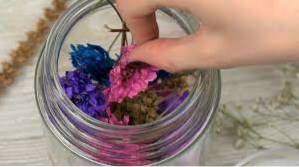The Japanese characters, or Kanji, for shinrin-yoku even look like little trees: ę£®ę굓. In Japan, excessively hard-working businessmen practise shinrin-yoku to relax by escaping the city for a weekend and hiking so as to bathe in the forest atmosphere and experience a human-nature relationship.
- What does the Japanese term Shinrin Yoku mean?
- How do you do the forest bath?
- Who invented forest bathing?
- What is a nature bath?
- Which plants give off Phytoncides?
What does the Japanese term Shinrin Yoku mean?
And I have been investigating the science behind that feeling for many years. In Japan, we practice something called forest bathing, or shinrin-yoku. Shinrin in Japanese means āforest,ā and yoku means ābath.ā So shinrin-yoku means bathing in the forest atmosphere, or taking in the forest through our senses.
How do you do the forest bath?
How to start forest bathing
- Turn off your devices to give yourself the best chance of relaxing, being mindful and enjoying a sensory forest-based experience.
- Slow down. ...
- Take long breaths deep into the abdomen. ...
- Stop, stand or sit, smell what's around you, what can you smell?
Who invented forest bathing?
Shinrin-yoku or forest bathing has ancient roots in Japan and Asia. The term āforest bathingā was coined in Japan, where nature therapy has ancient roots. The idea of āpark prescriptionsā in urban areas first started in Asia and caught on worldwide.
What is a nature bath?
The idea of nature baths comes from a Japanese concept called shinrin-yoku, which means āforest bathingā or ārelaxing in a forest atmosphere.ā You don't need to put on your swimsuit or get wet ā during a nature bath, you're ābathingā in the energy and clean air of the woods.
Which plants give off Phytoncides?
Cedar, garlic, locust, oak, onion, pine, tea tree, many spices, and many other plants give off phytoncides. Garlic contains allicin and diallyl disulfide.
 Planetagarden
Planetagarden



